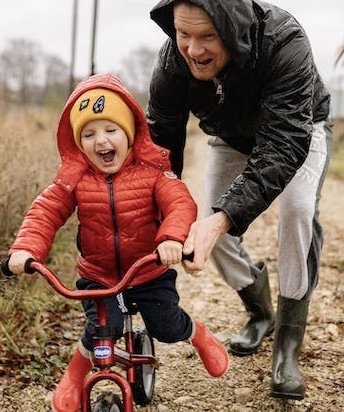What is Your Attachment Style?
Have you ever wondered about frustrating or “unhealthy” patterns in your relationships? Are you caught in the same repeated arguments with your partner/spouse? Do you feel surprised and dismayed when you sound like one of your parents, as you try to discipline your kids? Or maybe you notice that friends disappear just when you need them the most?
Many of our relationship patterns are deeply ingrained in our unconscious, and were learned early in childhood, as we watched our caregivers relate to us and to others. Some of these relational influences are absorbed in infancy, even before we could speak. They are learned by the modeling we saw in our families and environment, and the experiences we had in our earliest relationships.
The good news is that you can become more aware of your relational habits and underlying beliefs. More importantly, you can change and re-pattern old, unconscious ways of relating, in order to experience more fulfilling relationships. You can learn how to better understand and accommodate your partners’ attachment strategies, (and they can do the same for you), to reduce conflict and frustration. You can improve and deepen connections with friends, family and business associates.
What Does Attachment Mean?
Attachment is bonding with caregivers, starts in utero and infancy, and sets a template for our health, as well as relationships. There are two basic types of attachment styles: secure and insecure. Both of these fall on continuums, and are somewhat dependent on situations and specific relationships (so they are not “set in stone”). Most people have some combination of strategies, rather than just one way of relating.
Secure attachment means that a child has an overall sense of security, that a parent/caregiver will be consistently available to take care of his/her needs (to be fed, held, etc), and to provide comfort when in distress. This includes safe and nurturing touch, loving attention, and emotional attunement. Secure children grow up to be adults who feel confident, empathetic, flexible and more resilient in the face of adversity. They are able to enjoy intimacy, express affection, and are comfortable being on their own as well. Secure adults are able to balance independence and mutual interdependence with others.
Insecure attachment styles fall into three basic categories:
1. Anxious/Ambivalent/Angry
2. Avoidant/Dismissive
3. Disorganized
Anxious/Ambivalent style tends to happen when a caregiver is inconsistently available, either physically or emotionally, which creates confusion and insecurity in a young child. The caregiver is attentive some of the time, and emotionally or physically unavailable sometimes, so it feels unpredictable. This may be because a parent is overwhelmed or distracted, or there are circumstances out of their control. Often this caregiver has an anxious attachment style too. This compensation will show up in adulthood as someone who desperately seeks contact with others, to help with reassurance or soothing, in a way that may feel “needy” to others. A person with this attachment strategy tends to be the “pursuer”, and may come across as “clingy”, or needing a lot of attention. An anxious/ambivalent person has a deep underlying fear of losing relationships. Thus they may ignore their own needs in order to stay connected. When an adult or child with ambivalent/anxious attachment does not feel “heard” or emotionally met in relationship, he/she may feel “abandoned”, and angry about the other person’s perceived lack of support.
Avoidant strategy comes about when a caregiver is emotionally absent, neglectful or rejecting, even though that parent may provide basic needs like food and shelter. This may happen when a caregiver is deeply depressed, or when they did not experience emotional connection in their own family. In this case, the child learns that they cannot rely on others to meet emotional needs. They adapt by outwardly seeming to be indifferent and apathetic to attention from others, even though inwardly they long for connection. Over time, this person will tend to minimize their own needs for social or emotional support. They tend to be more rational, intellectual, and factual, rather than emotional in their personality and even in the careers they choose. The “avoidant” person will often “dismiss” others’ needs for emotional support, as well as their own needs. They might even feel superior to people who express emotional needs, and sabotage relationships that begin to feel too close.
Disorganized style develops when a caregiver is highly unpredictable or scary, so this results in a child feeling intense fear/terror at times. This can happen when there is physical, sexual or verbal abuse, substance abuse or major mental health instability in a caregiver. This child will feel strong opposing internal impulses: one to run away, and the other to go towards the caregiver (to “attach”). We are biologically “hard-wired” as infants for attachment, since we need adults to survive. But at the same time, it will feel unsafe, even life-threatening, to be around that caregiver. So it is confusing and difficult to find a sense of safety, or to trust any nurturing, because it can “flip” suddenly into a scary situation. As an adult, the message someone with disorganized attachment will communicate to others can be confusing, i.e., “Come here”, then “Go away!” This will make it very difficult to form close relationships, since intimacy is associated with harm, threat and distrust for someone with this attachment style.
Most of us will have some combination of the above strategies, but have a tendency toward one or two of these. For instance, someone may have reasons to feel “disorganized”, but tend more toward “anxious” than “avoidant”. But someone who is often anxious, and more of a pursuer, may switch to being avoidant in certain relationships, depending on the nature of that relationship (e.g. if the other person is pursuing). Someone may be usually more avoidant and independent, but find themselves feeling anxious and clingy if the other person takes on an avoidant role.
All of us will feel more “secure” with others who provide safety and kindness. Thus we can modify our attachment style, by spending time with others who are able to be supportive, loving and understanding.
Insecure strategies are simply ways we learned to adapt to difficult or confusing situations, in order to get our needs met, whether for safety or nurturing, or other basic needs. But we are neurologically wired to attach, and need safe, loving connections, in order to thrive as human beings. The good news is that you can repair and re-pattern old adaptations, and move towards a more secure attachment style, if you find even one safe, caring relationship, whether through a friendship, romantic partner or therapy.
If you are curious to learn more about your personal attachment style, you can take a quick attachment quiz developed by Diane Poole Heller (https://traumasolutions.com/attachment-styles-quiz/).
Re-patterning Attachment
A somatic therapist is specially trained to help guide you in accessing and healing old attachment wounds. Working with the body and somatic sensations is a more efficient way to help with attachment issues than talk therapy alone. This is because attachment ruptures often happen when we are babies, and are “preverbal”. By listening to your body’s cues, as well as thoughts, images and emotions that arise during therapy, this will allow your nervous system to naturally highlight and release deeply held tensions in your body. In addition, you will be able to make connections (find meaning), to see your habitual patterns more clearly, and to transform relational as well as somatic patterns. There are many things that we may not recall from our early life, but our bodies remember. The body has its own “story”, as Bessel van der Kolk describes in his book about trauma, The Body Keeps the Score. The body is the key to finding the way out of these old patterns.
Click here for more information on Attachment therapy.





